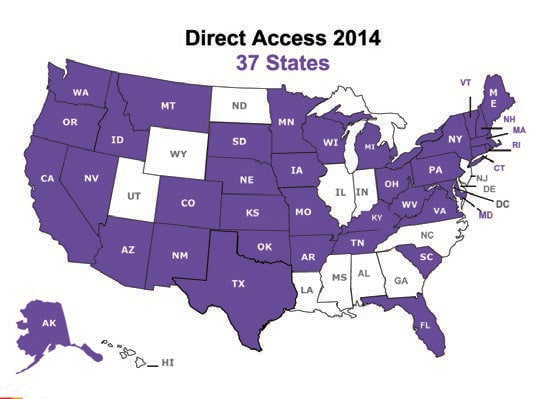
The Role of Supervision
Through an understanding of supervision requirements, dental hygienists are better able to navigate the world of expanded function opportunities.
The demand for oral health care increased substantially in 2014 due, in large part, to the enactment of the Patient Protection and Affordable Care Act, which expands dental coverage to millions of uninsured children. The dental hygiene profession continues to evolve to meet both the current and future oral health care needs of the public. Increasing dental hygienists’ scope of practice is vital as states change their dental practice acts to expand access to oral health care.1

Dental hygienists work in a variety of settings delivering oral health care services at varying levels of supervision. The primary types of supervision in the allied dental profession include:
- Direct supervision—the dentist is present
- Indirect supervision—the dentist is present in the facility
- General supervision—the dentist needs to authorize services to allied dental staff, but does not need to be present in the facility
- Prescriptive supervision—the dental hygienist can practice independently as long as the patient is seen by a dentist within a specific timeframe
- Direct-access supervision—the dental hygienist can provide services as he or she deems appropriate without specific authorization from a licensed dentist
SCOPE OF PRACTICE
Currently, 37 states allow the public direct access to dental hygienists in at least one practice setting (Figure 1). Several states have passed legislation or are in the process of pursuing legislation to expand the scope of practice for dental hygienists, including: Maine, Minnesota, Alaska, California, Oregon, New Mexico, Kansas, Vermont, New Hampshire, and North Dakota. All 50 states and the District of Columbia have laws governing the services dental hygienists can provide, as well as the treatment settings in which they practice and the type of supervision required.2
MID-LEVEL PROVIDERS
Mid-level oral health practitioner models have been created to provide preventive and therapeutic services.1,3 General and direct-access supervision provides mid-level practitioners the latitude to practice collaboratively with dentists through various forms of supervision. The intent of states adding new providers to the dental hygiene profession is to address access to care.2,3 In 2010, the American Association of Public Health Dentistry convened two panels of academicians to provide recommendations for future mid-level oral health providers. Their goal was not to prepare allied dental professionals for independent practice, but to provide recommendations for states that plan to sponsor mid-level provider legislation.4,5
CURRENT LEGISLATION REGARDING SUPERVISION
Rhode Island is among the states considering legislation regarding supervision, as an act has been introduced to authorize the practice of public health dental hygienists who will be able to perform certain dental services in public health settings. Illinois has a bill pending that will enable dental hygienists to work under the remote supervision of a licensed dentist. Indiana just passed legislation in spring 2014 that allows dental hygienists to practice under prescriptive supervision. Virginia has submitted a bill to enable dental hygienists to practice through teledentistry supervision, meaning the dentist is available in real-time via electronic communication but is not on-site.
As future dental practitioner models evolve, the dental hygiene profession will continue to adapt by providing expansive oral health care to the public. The addition of new primary oral health care providers will increase access to dental services for all Americans.
REFERENCES
- American Dental Hygienists’ Association. The Benefits of Dental Hygiene-Based Oral Health Provider Models. Available at: adha.org/resources-docs/75112_Hygiene_Based_Workforce_Models.pdf. Accessed September 24, 2014.
- American Dental Hygienists’ Association. Direct access states. Available at:
adha.org/resources-docs/7513_Direct_Access_to_Care_from_DH.pdf. Accessed September 24, 2014. - McKinnon M, Luke G, Bresch J, Moss M, Valachovic RW. Emerging allied dental workforce models. J Dental Educ. 2007;71:1476–1491.
- Edelstein BL. Training new dental health providers in the United States. J Public Health Dent. 2011; 71:S3–S8.
- Licari FW, Evans CA. Recommended standards for dental therapy education programs in the United States: a summary of critical issues. J Public Health Dent. 2014;74:257–260.
From Perspectives on Dental Hygiene, a supplement to Dimensions of Dental Hygiene. November 2014;12(11):20,22.

